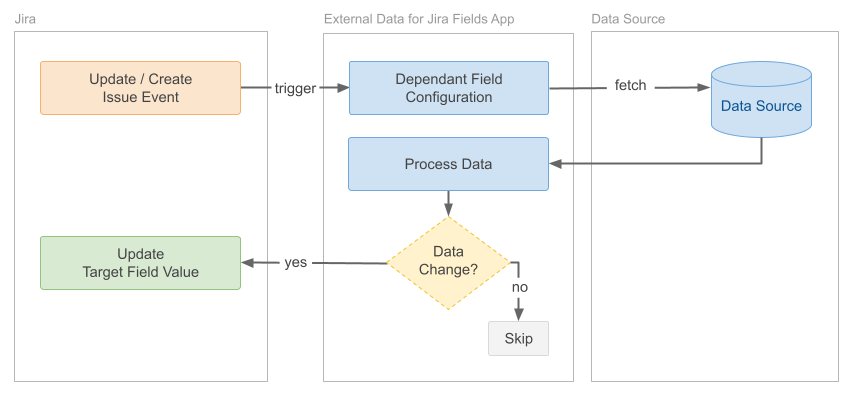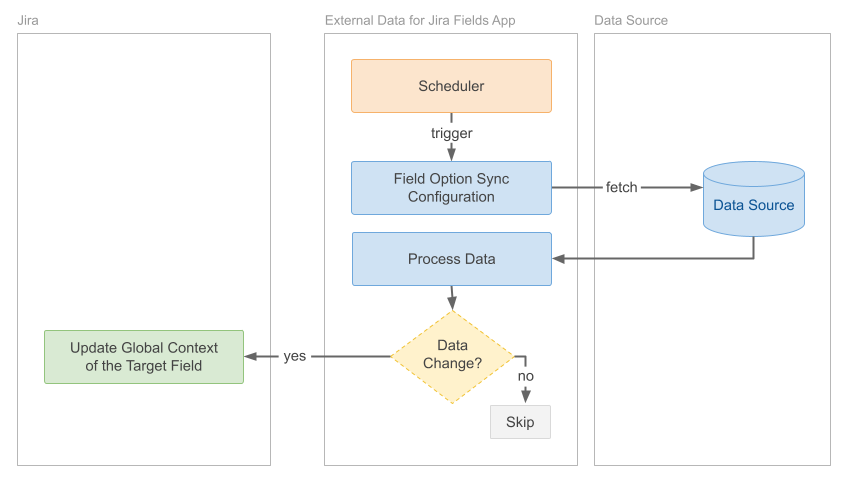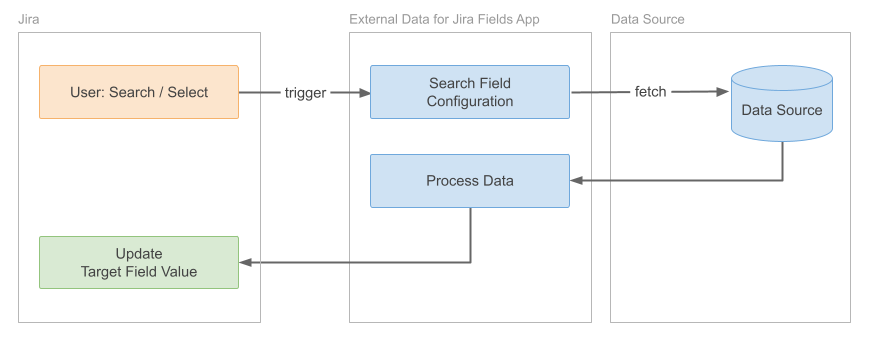Field Configurations Comparison
In order to use "External Data for Jira Fields" effectively, it is key to choose the right field configuration type for your project. This page provides you with a detailed overview of the individual field types with details on the trigger mechanisms, processes and suitable use cases.
Dependant Field
Event-driven field updates in response to changes within an issue, such as status updates or modifications in the parent fields. This includes bulk updates and cases where fields are cleared and then re-added. The value of the dependent field is updated when the value of the parent field is created or changed.
Use Case: Ideal for scenarios in which the value of a field in Jira should change based on changes in other fields or issue attributes. For example. updating a priority field based on a change in the issue’s severity field.

Field Options Sync
Utilizes a scheduler to periodically sync field options with external data, independent of user actions or issue updates. The base context of the target field is updated by writing the latest up-to-date value from the database into the target field.
Use Case: Suited for maintaining dynamic drop-downs or selection fields that need to reflect the latest available data from external sources. For example, updating a list of customers or product codes regularly.

Search Field
Triggered by user-interaction. When a user performs a search or selects an item from a drop-down list, data will be fetched in real-time from an external source. The value containing the search result will be written to the search target field, which is seperate from the search input field / select list.
Use Case: Perfect for users that need to access specific data from an external database directly in Jira. For example: Looking up a specific customer from a CRM system.

Search Default versus Search External
The default Search function creates a comprehensive search index for the search field by loading and converting all your data items into a searchable repository.
The search is fully customizable. You can specify which of your fields should be searchable and which values should be written to a target field during the configuration of the search field. You do not need a specific external search endpoint to perform the search.
Search Default Process Diagram:

Search External allows you to use the capabilities of an external search endpoint to perform a search. You can personalize the display of search results in the configuration and define which specific values are gathered and displayed.
In most cases, this function demands a data source that is able to process a variable representing the user's search input. The key advantage of this search option is that you’re working with a search result instead of a complete set of potential values.
Search External Process Diagram:

Info Panel
Displays information in real-time based on standalone settings or values from other issue fields. Can be combined with a search field, to provide further context or detailed information based on the issue's current state or user inputs. Depending on the Info Panel configuration, data is fetched from the data source and according to the pre-settings. The appearance of Info Panels can be customized using HTML & CSS.
Use Case: Showing additional information from external data sources within an issue. For example: Add detailed product specifications or extended customer information to a search result.

Comparison Matrix
Field Type | Dependency | Trigger / Method | Data Output Target |
|---|---|---|---|
Dependant Field | Issue: Parent Field | Event-driven (create(change by user/bulk/automation) | Target Field |
Field Options Sync | Data Base Context | Scheduler | Target Field |
Search Field | Issue: Search Input | User-Interaction (Select/Search) | Target Field |
Info Panel | Data Base Entries | Issue View | Info Panel |
